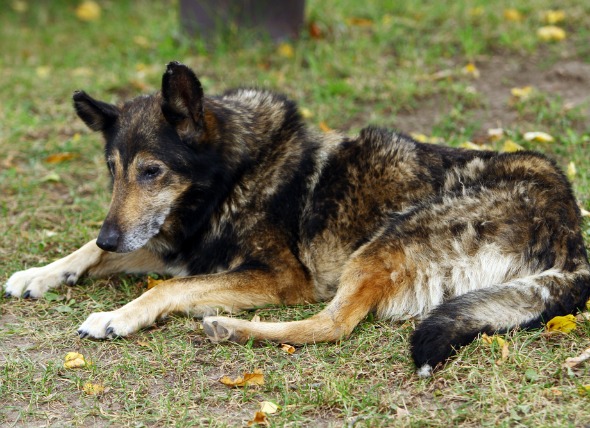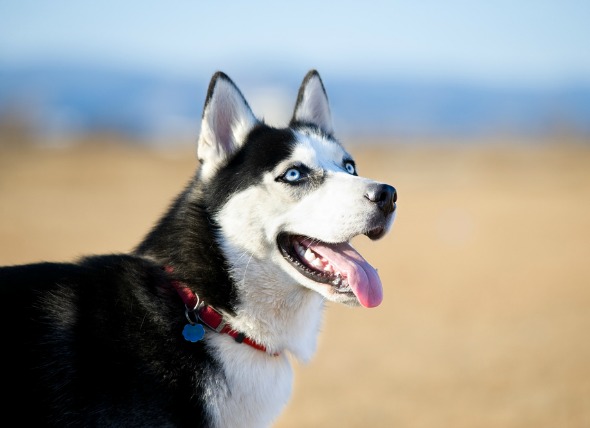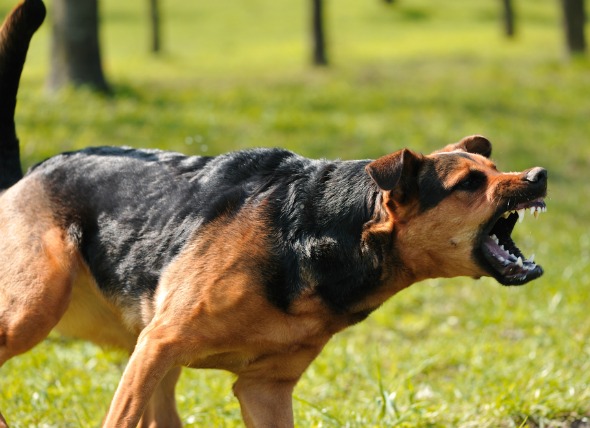

Osteoarthritis, also known as degenerative joint disease (DJD), is defined as the progressive and permanent long-term deterioration of the cartilage surrounding the joints. Arthritis is the medical term for inflammation of the joints, while osteoarthritis is the term referring to a form of chronic joint inflammation caused by deterioration of joint cartilage. Older dogs are at the highest risk.
The condition or disease described in this medical article can affect both dogs and cats. If you would like to learn more about how this disease affects cats, please visit this page in the PetMD health library.
Symptoms of DJD vary. Your dog may exhibit a decreased level of activity, occasional lameness, and a stiff gait that worsens with exercise. These symptoms may increase with exercise, long periods of inactivity, or cold weather.
There is no known cause for primary DJD. However, there are a wide variety of causes for secondary DJD, such as trauma, abnormal wear on joints and cartilage, or a congenital defect present at birth such as an improperly formed hip (also known as hip dysplasia).
Causes of secondary DJD in dogs may include abnormal development of the hip or elbow (hip or elbow dysplasia), dislocation of the kneecap or shoulder, and osteochondritis dissecans (OCD), a condition in which the bone and cartilage develop abnormally so that a flap of cartilage develops within the joint.
Obesity is another factor for DJD, as it increases stress on joints. In addition, dogs with disorders such as diabetes, prolonged steroid treatment, and hyperlaxity (an excessive looseness of the joints) may also be at higher risk for DJD.
A diagnosis of DJD may be done based on an assessment of historical symptoms, such as decreased activity or stiffness, as well as a physical examination which will reveal a decreased range of motion, stiff-legged gait, deformity of the joints, and swelling or pain in the joints.
Medical treatment of DJD is designed to control signs and symptoms of the disease, not to cure it. Surgery may help alleviate symptoms and slow the disease’s progression. This can include reconstructive procedures, joint removal or replacement, and the surgical removal of aggravating causes, such as bone or cartilage fragments, in a joint.
Physical therapy designed to maintain or increase joint motion is very beneficial and may be done with various motion exercises, swimming, and massage. Exercise designed to strengthen muscle tone is also useful. The pain that comes with arthritis can be managed by cold and heat therapy, such as with heating pads.
Long-term medication may also be helpful in reducing joint swelling and pain. Anti-inflammatory drugs, for example, are often recommended.
Continue to monitor your dog's symptoms, as DJD is likely to progress with time, and a change in drug selection or dosage or further surgical intervention may become necessary. Limit activity to a level that will not aggravate symptoms and pain. In addition, a diet including omega fatty acids is sometimes recommended to decrease inflammation.
Prompt treatment of DJD is important to help reduce the disease’s progression of symptoms. It is generally important to avoid trauma or excessive pressure to joints. Exercise and a healthy diet can also prevent obesity, which adds stress to joints.
 Abnormal Growths in the Lower Intestines of Dogs
Rectoanal Polyps in Dogs
Rectoanal polyps is char
Abnormal Growths in the Lower Intestines of Dogs
Rectoanal Polyps in Dogs
Rectoanal polyps is char
 Anemia Related to the Immune System in Dogs
Immune Mediated Anemia
The immune system in a dog
Anemia Related to the Immune System in Dogs
Immune Mediated Anemia
The immune system in a dog
 Tumor of the Eye in Dogs
Uveal Melanoma in Dogs
The uvea is the part of th
Tumor of the Eye in Dogs
Uveal Melanoma in Dogs
The uvea is the part of th
 Cancerous and Non-Cancerous Growths in a Dog's Mouth
Oral Masses (Malignant and Benign) in Dogs
An ora
Cancerous and Non-Cancerous Growths in a Dog's Mouth
Oral Masses (Malignant and Benign) in Dogs
An ora
 Aggression in Dogs Toward Familiar People
Dominance, Fear, or Predatory Aggression in Dogs
Aggression in Dogs Toward Familiar People
Dominance, Fear, or Predatory Aggression in Dogs
Copyright © 2005-2016 Pet Information All Rights Reserved
Contact us: www162date@outlook.com